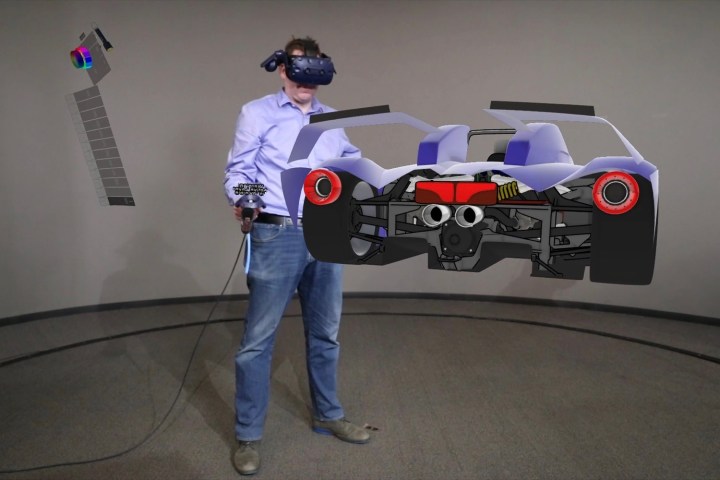
Designing a new car usually starts with a person sitting down at a desk and sketching out the car to be in two dimensions. But Ford wants its designers to throw on virtual reality headsets and start sketching in three dimensions. The automaker believes this will lead to more “human-centric” designs.
Other automakers have used virtual reality in the design process, but Ford claims to be the first to use Gravity Sketch, which lets designers virtually “draw” in three dimensions. A controller acts like a pen, with motion tracking turning hand gestures into lines. A designer can stand in the middle of a room and draw a car around themselves, according to Ford.
Virtual reality gives designers a 360-degree view of the car as they’re sketching it out, Michael Smith, Ford design manager, said in a statement. Designers can also keep the placement of the driver in mind throughout the process, according to Ford, and make changes to improve occupant comfort.
But the main benefit of virtual reality may be efficiency. Traditional car design starts with two-dimensional sketches, which are then scanned and converted into virtual three-dimensional models, Ford noted. This can take weeks, meaning designers have to be selective about what gets chosen, according to the automaker. Sketching designs out in three dimensions could save time. It could also allow designers working in different studios to collaborate on projects in real time, according to Ford.
Virtual reality is already saving time in other parts of the design process. Before a design is finalized, automakers traditionally construct full-scale clay models. The models are reviewed by designers and executives to ensure everything looks right before the design is signed off. These models are expensive and labor intensive to build, however, so Ford and other automakers have experimented with using virtual reality instead. It’s much cheaper and easier to make a model out of pixels than clay.
Ford claims “dozens” of interior and exterior designers are experimenting with Gravity Sketch across its five global design studios. We’ll have to wait and see how this new tech influences the design of future Ford vehicles.


